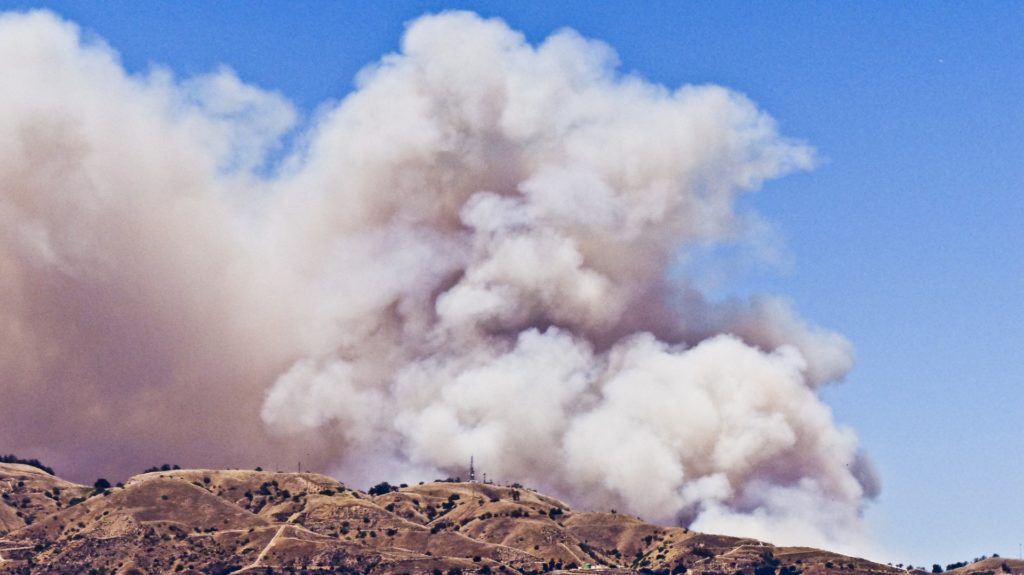 It’s well-known that wildfires cause substantial air pollution. However, even after the air has cleared, the smell of smoke can linger in homes within the fire’s immediate and surrounding vicinities. The odor is not only unpleasant, it’s unhealthy for your respiratory system and notoriously difficult to remove.
It’s well-known that wildfires cause substantial air pollution. However, even after the air has cleared, the smell of smoke can linger in homes within the fire’s immediate and surrounding vicinities. The odor is not only unpleasant, it’s unhealthy for your respiratory system and notoriously difficult to remove.
In this piece, we’ll explain methods for removing smoke odors from your home and belongings. You can get started with some DIY tasks, but for certain jobs, you may need to bring in a professional.
Don’t bother with air fresheners
Air fresheners, deodorizers and scented candles may mask the smell of smoke, but they won’t do anything to address its underlying causes. The microscopic particles responsible for the lingering smell of smoke are now lodged in various surfaces of your home, such as curtains, carpeting, light fixtures, walls and furniture. For the odor to finally dissipate, you’ll need to reduce the presence of these particles.
Remove smoke smells from exterior surfaces
If your home’s exterior was singed by fire, pressure washing can reduce the presence of smoke stains and odors. A pressure washing company will know what settings to use for each surface and what detergents are compatible with the building materials.
DIY cleaning solutions
You should begin the deodorizing process by washing every surface of your home with a solution composed of water, vinegar and dish soap. Again, brand-name cleaners that claim to have deodorizing functions will only mask the smoke smell. Vinegar, on the other hand, is mildly acidic, which enables it to neutralize odor-causing elements. Use this solution to cleanse all hard surfaces inside your home: ceilings, walls, hardwood floors, counters, metal blinds, cabinets, windows and window screens, solid furniture, and any knick-knacks you have on display. Be careful not to combine vinegar with bleach, which creates noxious fumes, or use it on upholstery, where it can leave stains.
Removing odors from carpets and furnishings
The smell of smoke can remain in carpets and upholstery for months after a fire. To start addressing the odors, sprinkle baking soda on your carpet and upholstered furniture. If this doesn’t do the trick, you should consider hiring a cleaning and restoration company. A technician will combat the smoke odors using counteractants—complex chemical compounds (usually biodegradable) that break down odor-causing molecules. Alternately, they may choose to expose the affected furnishings to ozone (O3), a highly reactive molecule that breaks up any particles it comes into contact with. Ozone treatments are best left to professionals, as overexposure to the gas is hazardous.
Smoke and your HVAC system
Smoke particles can easily travel into a home’s ventilation system. Even if you didn’t turn on your HVAC system for the duration of the wildfire, passive air movement can still bring these particles into the ductwork. If you continue to notice a smoke smell after completely cleansing your home, this may be the reason. To address the problem, change the air filters and hire a professional to clean the ductwork and remove the lingering smoke residue. This should leave your home’s air cleaner and healthier and be the closing step for deodorizing your home.
Tips for deodorizing your vehicle
In addition to infiltrating your home, smoke can cling to the interior upholstery of your vehicle. To remove this odor, use the same water-vinegar-soap solution you used to clean your home—this will work on any leather, plastic or paneled surface in your vehicle. Use baking soda to absorb odors in the carpeting and cloth upholstery. If that doesn’t work, find a service that professionally cleans and details vehicles after fire damage.
Following the smoky conditions, it’s also a good idea to check your car’s engine filter and change it if necessary. Don’t put this off, as a clean filter is necessary for your car to run efficiently.
Find more information on our California Wildfire Resource Page
